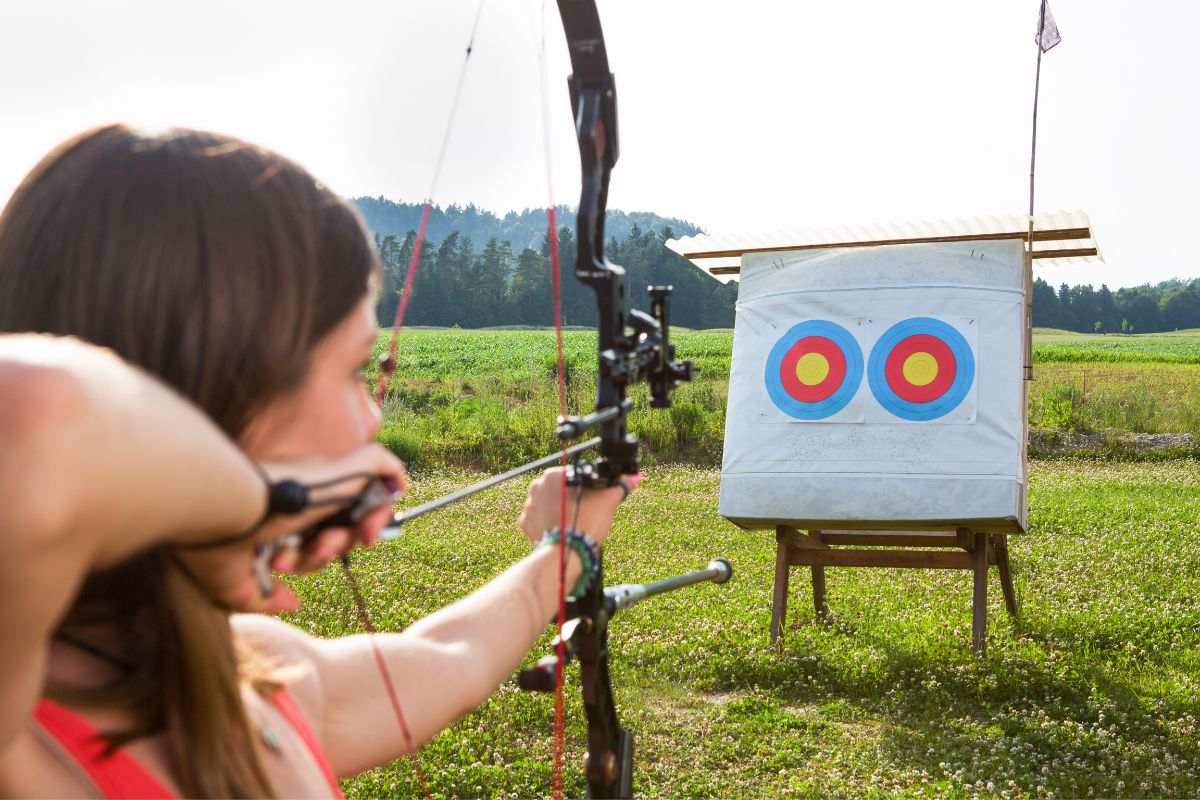A 40 lb draw weight is substantial, offering significant kinetic energy for an arrow. Such a bow is capable of high-speed launches that can indeed prove lethal.
Here are some typical arrow speeds for a 40 lb bow:
- Recurve bow: — 150 grain arrow – 135-150 fps — 500 grain arrow – 90-110 fps
- Compound bow: — 350 grain arrow – 170-190 fps — 400 grain arrow – 165-180 fps
Contents (Jump to Topic)
TogglePoint-Blank Speed
Manufacturers often list a bow’s velocity based on point-blank speed, which is the arrow’s initial speed unaffected by external factors.
For example, a bow rated for 300 feet per second (FPS) will reach that speed immediately upon release, though the actual impact speed will be less due to deceleration over distance.
IBO Speeds
Here are some key details on IBO standards for testing arrow speed and kinetic energy from compound bows:
- IBO speed ratings are measured using a 350-grain arrow at 70 lbs draw weight and 30″ draw length. This allows for standardized comparisons between different bows.
- For measuring kinetic energy, the IBO uses a 420 grain arrow at 70 lbs draw weight and 30″ draw length.
- The bow is shot through a chronograph to obtain the arrow’s speed in feet per second (fps). This speed is then used to calculate kinetic energy in foot-pounds (ft-lbs).
- Testing is done at intervals of 10 fps between 270 and 330 fps. The average kinetic energy is computed across this range.
- Bows must achieve a minimum kinetic energy of 45 ft-lbs to be IBO compliant. The maximum limit is 80 ft-lbs.
- Testing is performed at an ambient temperature of 70°F ± 2°. This minimizes variations due to heat expansion/contraction.
- All bows must be shot using the same mechanical release aid to ensure uniformity. The release helps eliminate human variation.
- Only new, unaltered bows can be certified. Any modifications will invalidate the IBO rating.
So in summary, the IBO uses standardized conditions and procedures to accurately compare speed and power between different compound bow models.
This allows fair evaluations for consumers.
Factors Influencing Arrow Velocity
- Draw Specifications: A bow’s speed is greatly affected by draw length and weight. Standard IBO speed tests utilize a 30-inch draw length and a 70 lb draw weight. Less draw length or weight typically means reduced speed—approximately 10 FPS less per inch of draw and 15-20 FPS less per 10 lbs of draw weight, which is especially relevant for a 40 lb bow.
- Equipment Variables: Every addition to your bowstring can reduce speed, including peep sights and D-loops, potentially reducing velocity by around 5-6 FPS due to their weight. Arrow weight also plays a critical role; heavier arrows will decrease speed, with an expected loss of 1.5 FPS for every 5 grains over the IBO standard 350-grain arrow.
- Release Technique: Even the most practiced archer cannot replicate the mechanical precision of an IBO test machine. Human release techniques inevitably lead to slight reductions in arrow speed.
The Effectiveness of a 40 Lb Bow
With 40 lbs draw weight you are legally allowed to hunt in most states of the US. Read more about the restrictions and regulations here.
Legal restrictions on hunting with lower draw weights often aim to ensure humane kills by maintaining sufficient kinetic energy for a clean shot.
Concluding Advice
When operating a 40 lb bow, anticipate speeds around 240 FPS, but expect some variation due to factors like wind, draw length/weight, arrow mass, and shooting technique.
Optimizing your equipment and acknowledging the limitations compared to machine-tested IBO standards will help in achieving the most effective and humane hunting results.






